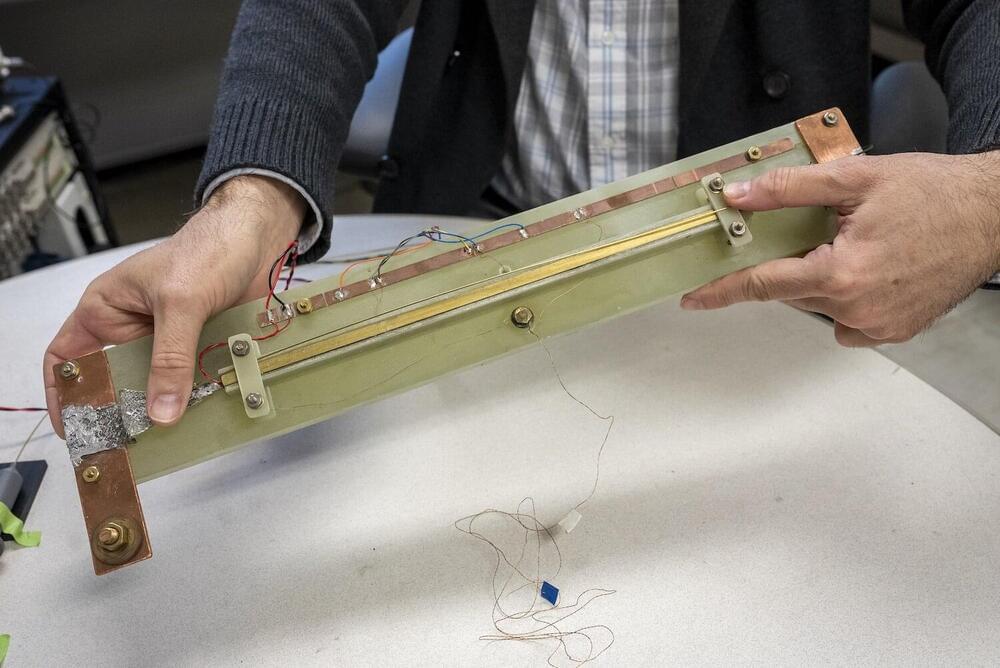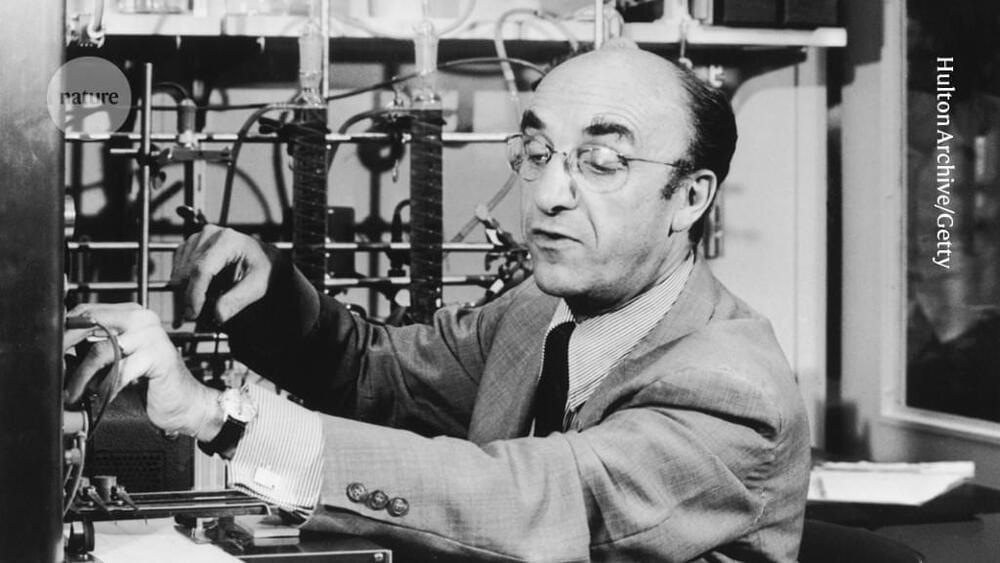The particle accelerators that enable high-energy physics and serve many fields of science, such as materials, medical, and fusion research, are driven by superconducting magnets that are, to put it simply, quite finicky.




Experiments with liquid metals could not only lead to exciting insights into geophysical and astrophysical flow phenomena, such as atmospheric disturbances at the rim of the sun or the flow in the Earth’s outer core, but also foster industrial applications, for example, the casting of liquid steel.
However, as liquid metals are non-transparent, suitable measurement techniques to visualize the flow in the entire volume are still lacking. A team of the Helmholtz-Zentrum Dresden-Rossendorf (HZDR) has now, for the first time, obtained a detailed three-dimensional image of a turbulent temperature-driven liquid metal flow using a self-developed method. In the Journal of Fluid Mechanics, they report on the challenges they had to overcome on the way.
Ever since researchers have been investigating the properties of turbulent flows in fluids, they have used an experiment that initially seems quite simple: the fluid is filled into a container/vessel whose base plate is heated and whose lid is cooled at the same time. A team of the Institute of Fluid Dynamics at HZDR is investigating the very details of this process.

From creating images, generating text, and enabling self-driving cars, the potential uses of artificial intelligence (AI) are vast and transformative. However, all this capability comes at a very high energy cost. For instance, estimates indicate that training OPEN AI’s popular GPT-3 model consumed over 1,287 MWh, enough to supply an average U.S. household for 120 years.

The printed solenoids could enable electronics that cost less and are easier to manufacture — on Earth or in space.
Imagine being able to build an entire dialysis machine using nothing more than a 3D printer.
This could not only reduce costs and eliminate manufacturing waste, but since this machine could be produced outside a factory, people with limited resources or those who live in remote areas may be able to access this medical device more easily.

Superconductivity makes physics seem like magic. At cold temperatures, superconducting materials allow electricity to flow indefinitely while expelling outside magnetic fields, causing them to levitate above magnets. MRIs, maglev trains, and high-energy particle accelerators use superconductivity, which also plays a crucial role in quantum computing, quantum sensors, and quantum measurement science. Someday, superconducting electric grids might deliver power with unprecedented efficiency.
Challenges with Superconductors
Yet scientists lack full control over conventional superconductors. These solid materials often comprise multiple kinds of atoms in complicated structures that are difficult to manipulate in the lab. It’s even harder to study what happens when there’s a sudden change, such as a spike in temperature or pressure, that throws the superconductor out of equilibrium.

Research utilizing the James Webb Space Telescope highlights the destructive power of ultraviolet “winds” on the gas in protoplanetary disks surrounding young stars, shedding light on the intricate dynamics that limit the formation of gas giants in the cosmos.
Ultraviolet “winds” from nearby massive stars are stripping the gas from a young star’s protoplanetary disk, causing it to rapidly lose mass, according to a new study. It reports the first directly observed evidence of far-ultraviolet (FUV)-driven photoevaporation of a protoplanetary disk. The findings, which use observations from the James Web Space Telescope (JWST), provide new insights into the constraints of gas giant planet formation, including in our own Solar System.
Insights into gas giant planet formation.

The mysteries of photosynthesis have been unveiled at the atomic level, providing significant new insights into this plant super-power that transformed the Earth into a green landscape over a billion years ago.
John Innes Centre researchers used an advanced microscopy method called cryo-EM to explore how the photosynthetic proteins are made.
The study, published in Cell, presents a model and resources to stimulate further fundamental discoveries in this field and assist longer-term goals of developing more resilient crops.

Sound waves thought to be from a 2014 meteor fireball north of Papua New Guinea were almost certainly vibrations from a truck rumbling along a nearby road, new Johns Hopkins University –led research shows. The findings raise doubts that materials pulled last year from the ocean are alien materials from that meteor, as was widely reported.
“The signal changed directions over time, exactly matching a road that runs past the seismometer,” said Benjamin Fernando, a planetary seismologist at Johns Hopkins who led the research. “It’s really difficult to take a signal and confirm it is not from something. But what we can do is show that there are lots of signals like this, and show they have all the characteristics we’d expect from a truck and none of the characteristics we’d expect from a meteor.”
The team presented their findings on March 12 at the Lunar and Planetary Science Conference in Houston.

Roger Guillemin identified the molecules in the brain that control the production of hormones in endocrine glands such as the pituitary and thyroid. His work led to a torrent of advances in neuroendocrinology, with far-reaching effects on studies of metabolism, reproduction and growth. For his discoveries on peptide-hormone production in the brain, Guillemin shared the 1977 Nobel Prize in Physiology or Medicine with Andrew Schally and Rosalyn Yalow. He has died at the age of 100.
In the autumn of 1969, after analysing millions of sheep brains for more than a decade, Guillemin and his colleagues determined the structure of thyrotropin-releasing factor (TRF). This small peptide is produced in the hypothalamus, a small region at the base of the brain, and is transported to the anterior lobe of the nearby pituitary gland, where it triggers the release of the hormone thyrotropin. Thyrotropin, in turn, stimulates the thyroid gland to produce the hormone thyroxine, which regulates metabolic activity in nearly every tissue of the body. More than two dozen drugs use such hypothalamic hormones to treat endocrine disorders and cancers, and the worldwide market for these drugs is worth several billion dollars.
Guillemin was born in Dijon, France, and came of age at the end of the Second World War. He graduated from medical school in the University of Lyon, France, in 1949 and worked as a country doctor in the small commune of Saint-Seine-l’Abbaye in Burgundy. He found the work satisfying but intellectually limiting, noting that “in those days I could take care of all my patients with three prescriptions, including aspirin”. Fascinated by how the brain and pituitary gland control the body’s response to stress, he attended lectures in Paris by the Hungarian–Canadian endocrinologist Hans Selye, after which Selye accepted Guillemin’s request to spend a year doing research in his laboratory at the University of Montreal, Canada.